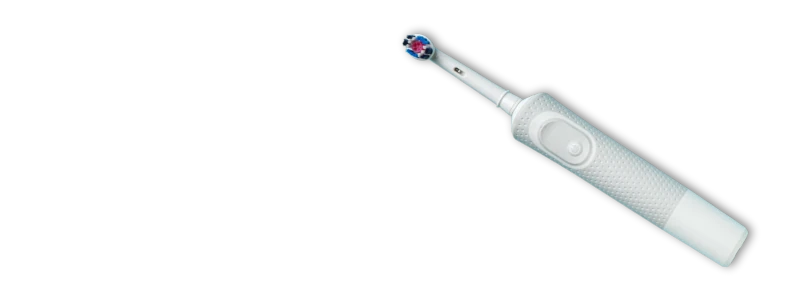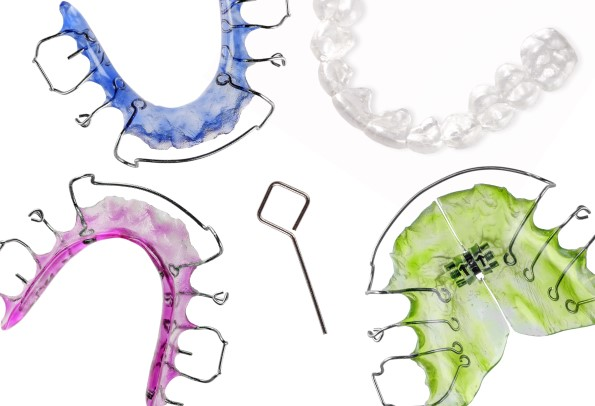
Retainers


A Key to Long-Lasting Smiles
Retainers After Braces
Embrace the retainer lifestyle–it's the secret ingredient in your recipe for retaining your perfect smile! Once your braces are removed, it’s only a matter of time until the periodontal ligament, which holds your teeth together, begins to move them back to their pre orthodontic positions. There’s a solution to this problem: retainers. They come in several forms and materials and can vary in cost, durability, and type.
Retainers are a great way to keep that perfect smile, but only when wearing them as instructed by your orthodontist.
Skipping the retainer stage could mean a need for re-treatment with braces. So, cherish your investment and the journey it took to gain your newfound smile!
Retainer Replacement Program
Sign up for our Retainer Program and save on the cost of replacement retainers. Plans start for as low as $99!
Sign Up
Types of Retainers
Wire Retainers
Wire retainers, also known as Hawley retainers, are removable and made from a molded acrylic arch and wire. This type of retainer is very durable and can last for years if maintained properly. They are easy to use, affordable, and very effective. Hawley retainers are much more noticeable than other removable retainer options.
Clear Retainers
Clear retainers, or Trutain retainers, are removable and almost invisible when you’re wearing them. Trutain retainers are molded to an exact fit on your teeth and are considered the most comfortable option by many patients. This type of retainer is very affordable and easy to use and clean. Clear retainers are a very popular option because of how easy they are to make and the cheap replacement costs.
Permanent Retainers
Bonded retainers, also called permanent retainers, are non-removable, highly effective retainers that consist of a wire that is fixed to 4 to 6 teeth on either the top or bottom. Unlike other options, this device cannot be removed and can stay in place for years. Permanent retainers are not visible from the front and you’ll never have to remember to put them in. As with any retainer, cleaning is important, but with permanent retainers, it can be complicated. Proper flossing is essential to prevent buildup that can be trapped by the retainer. Extensive buildup on the back of your teeth could cause gum disease or cavities.

Caring for Your Retainers
Removable
Good cleaning habits are very important to prevent bacteria and plaque from accumulating on your retainer and transferring to your teeth. Removable retainers should be cleaned daily to stop this buildup.
Wearing dirty removable retainers could cause tartar, a hardened form of plaque, to be cemented to your teeth. Several methods work very well at cleaning. A combination of water and baking soda brushed onto a retainer is an effective way to clean your retainer without causing damage. Pre-made retainer cleaners are also a great option for people who would rather not make their own.
Keep in mind that cool or warm water after cleaning is safe, but be careful of using water that is too hot, as it can overheat your retainer and cause it to warp and lose its shape. A case is a great way to protect your retainers from damage, but having a dirty case can do more harm than good.
Like your retainers, a case can be a haven for bacteria that can transfer to your retainers. Soap and water are a good way to clean a case, and most removable retainer cases are safe to clean in the top rack of your dishwasher.
Permanent
Permanent retainers are a simple concept but can be challenging to clean thoroughly. Brush your teeth twice daily as normal but make sure to pay special attention around the retainer. Normal flossing methods won’t work because of the wire behind your teeth.
A floss threader, a device that is designed for permanent retainer flossing can be a helpful way to get to those hard-to-reach spots behind your retainer. First, pass your floss through the loop on the threader and pass the threader between your teeth and the retainer.
Ongoing Retainer Care
Schedule
Forgetting to wear your retainers for a night or two on occasion is not a problem, but consistently not wearing them can quickly lead to problems. Be sure to wear your retainers as prescribed by your orthodontist. Teeth can start to move in as little as two weeks, so keep track of your retainer and remember to wear it.
Tightness or Pain
When you first receive new removable retainers you may feel some discomfort during and after you wear them. As you continue to wear your retainers as recommended this discomfort will subside. However, if you only wear them on occasion, you may feel tightness or pain every time you put them in. If you start to feel more tightness than usual when putting in your retainers, this is a sign that you aren’t wearing them enough.
Replacement & Costs
Retainer Replacement Program
Over the years, there has been one big problem with retainers…LOSING THEM! Our office offers a $99 RETAINER REPLACEMENT PLAN. This plan provides ease of mind when it comes to such a large investment.
Without retainers, patients risk teeth relapsing into their original position. If you have a lost or broken retainer, please contact our office as soon as possible. Make sure you keep your retainers in a safe place away from the ground, dogs love to chew on them!
Benefits
- Save up to 60% on the cost of your replacement retainer
- Premiums as low as $99
- No annual fee
Terms
- Must purchase the policy before retainers are lost or broken
- All premiums are non-refundable
- The plan is valid for 5 years from the signed agreement date
- Plan is good for up to 5 replacement retainers
Trutain (Clear) Retainer
Regular fee: $250
Plan Fee: $100
Hawley (Wire) Retainer
Regular Fee: $375
Plan Fee: $150
Bonded (Permanent) Retainer
Regular Fee: $400
Plan Fee: $175

